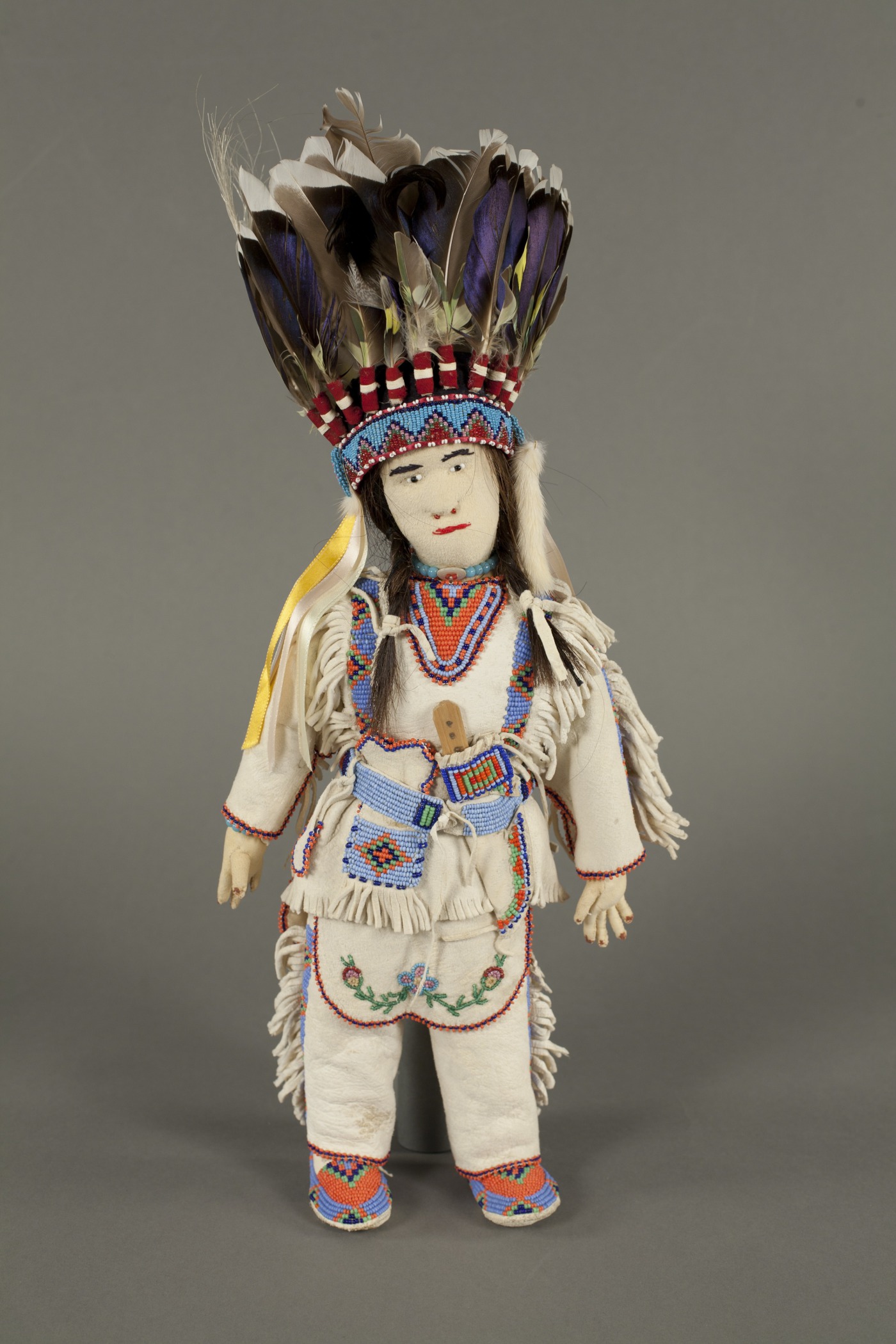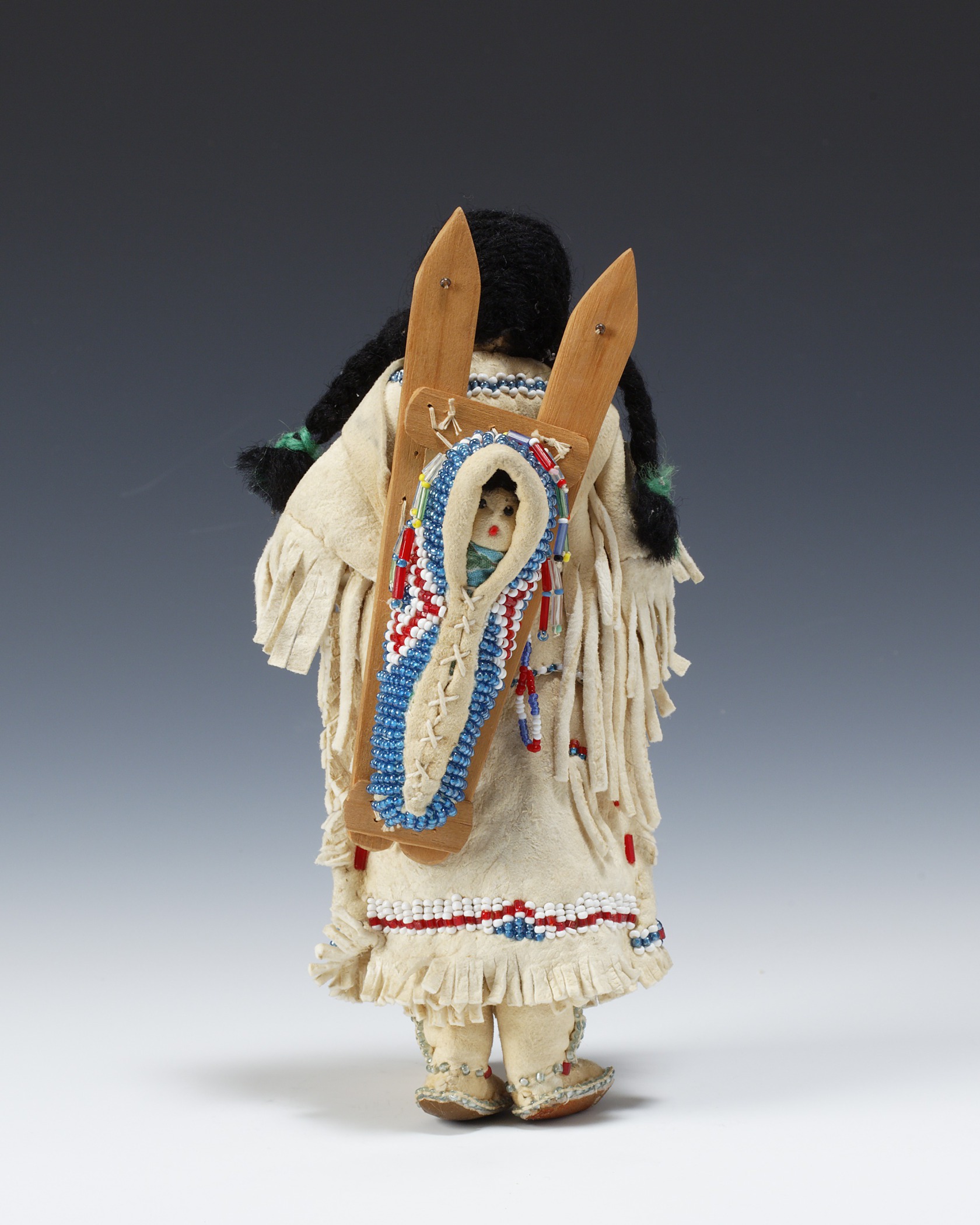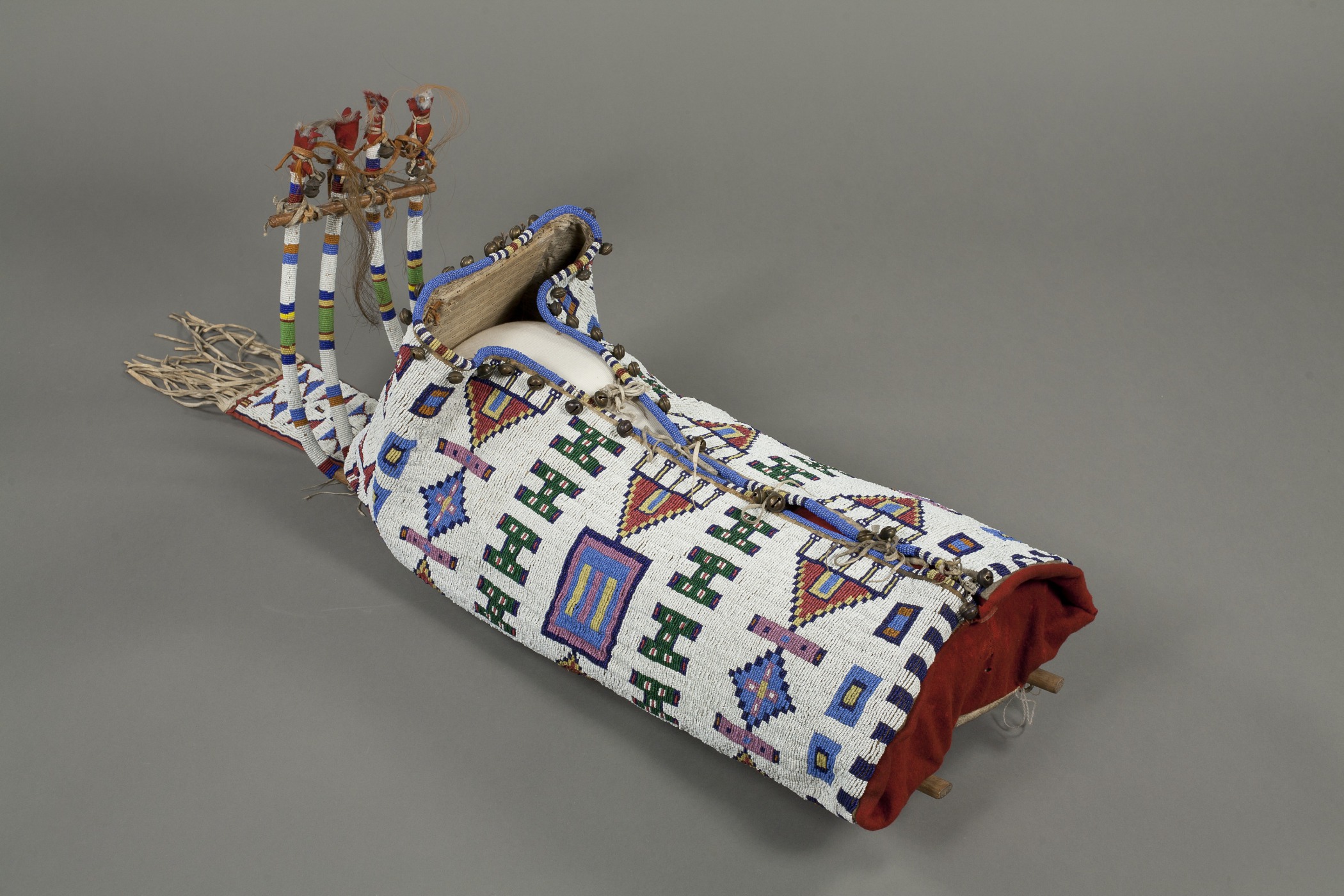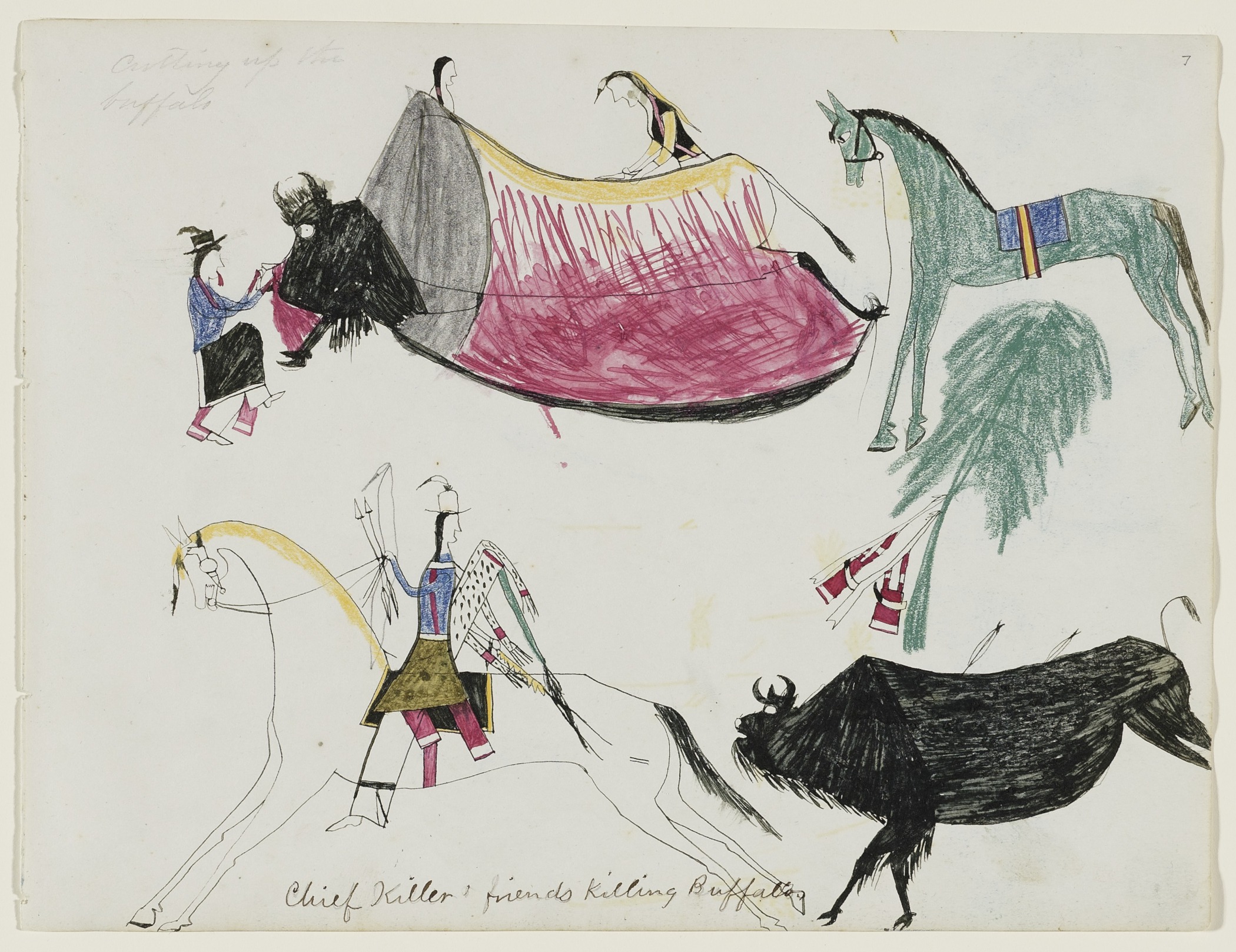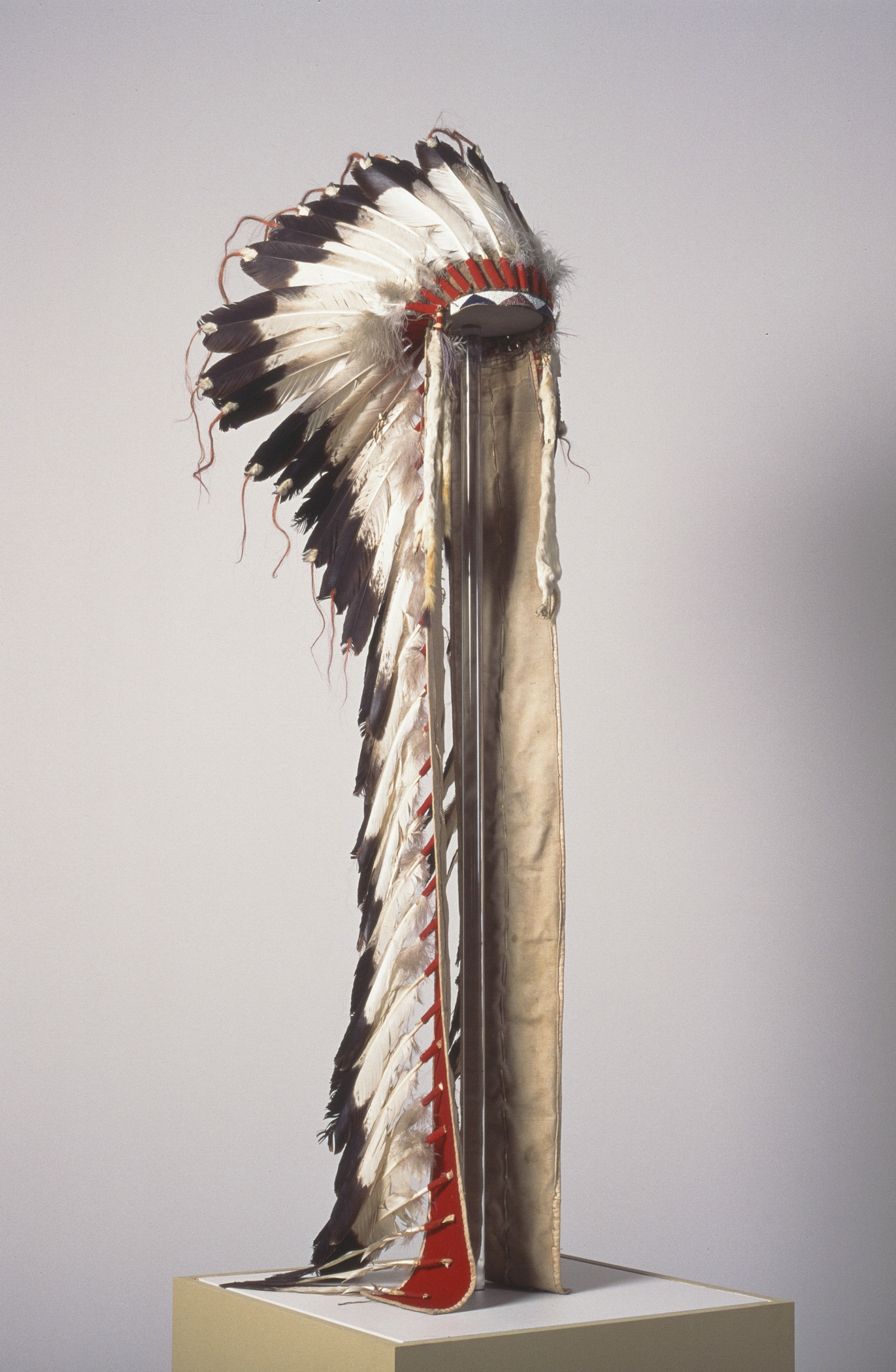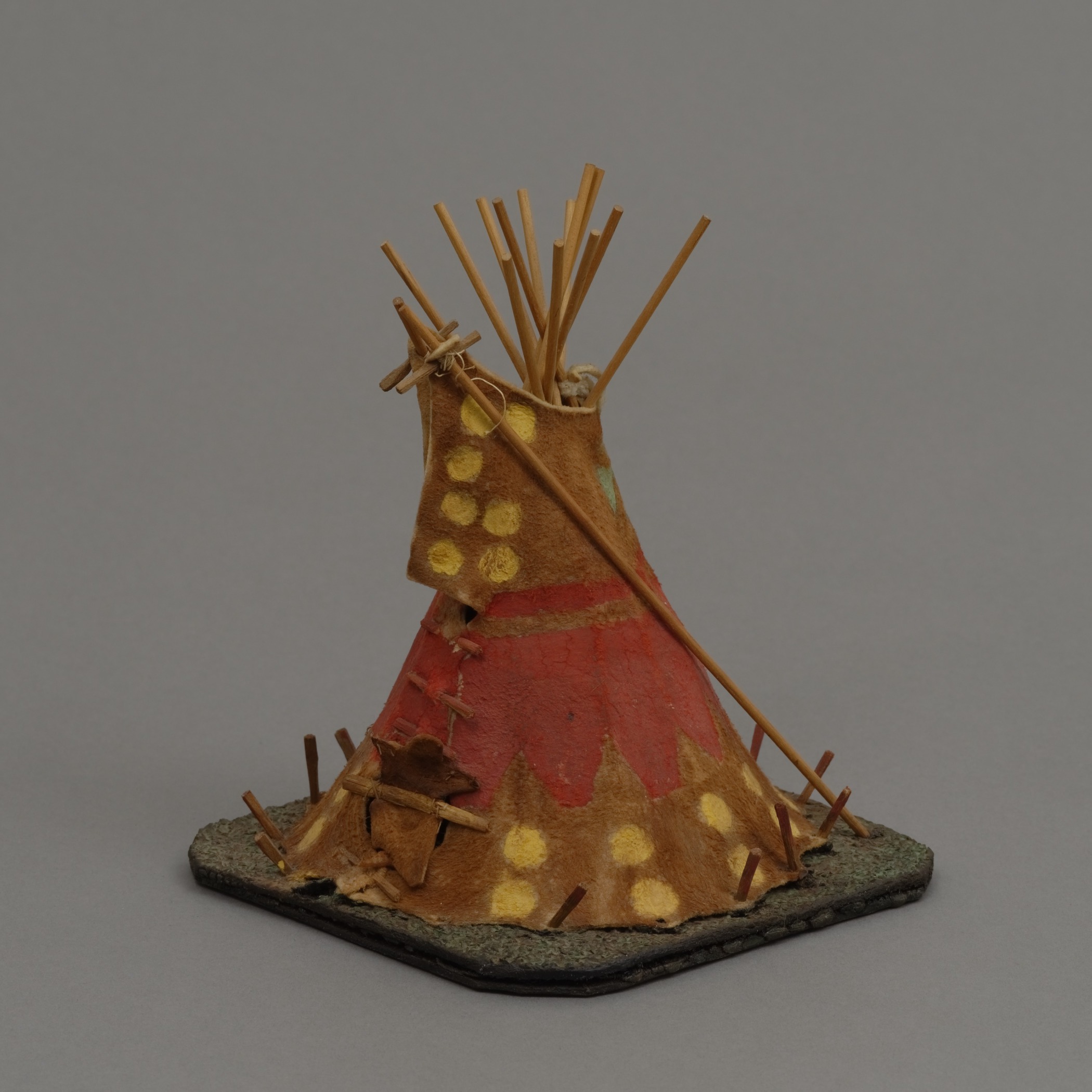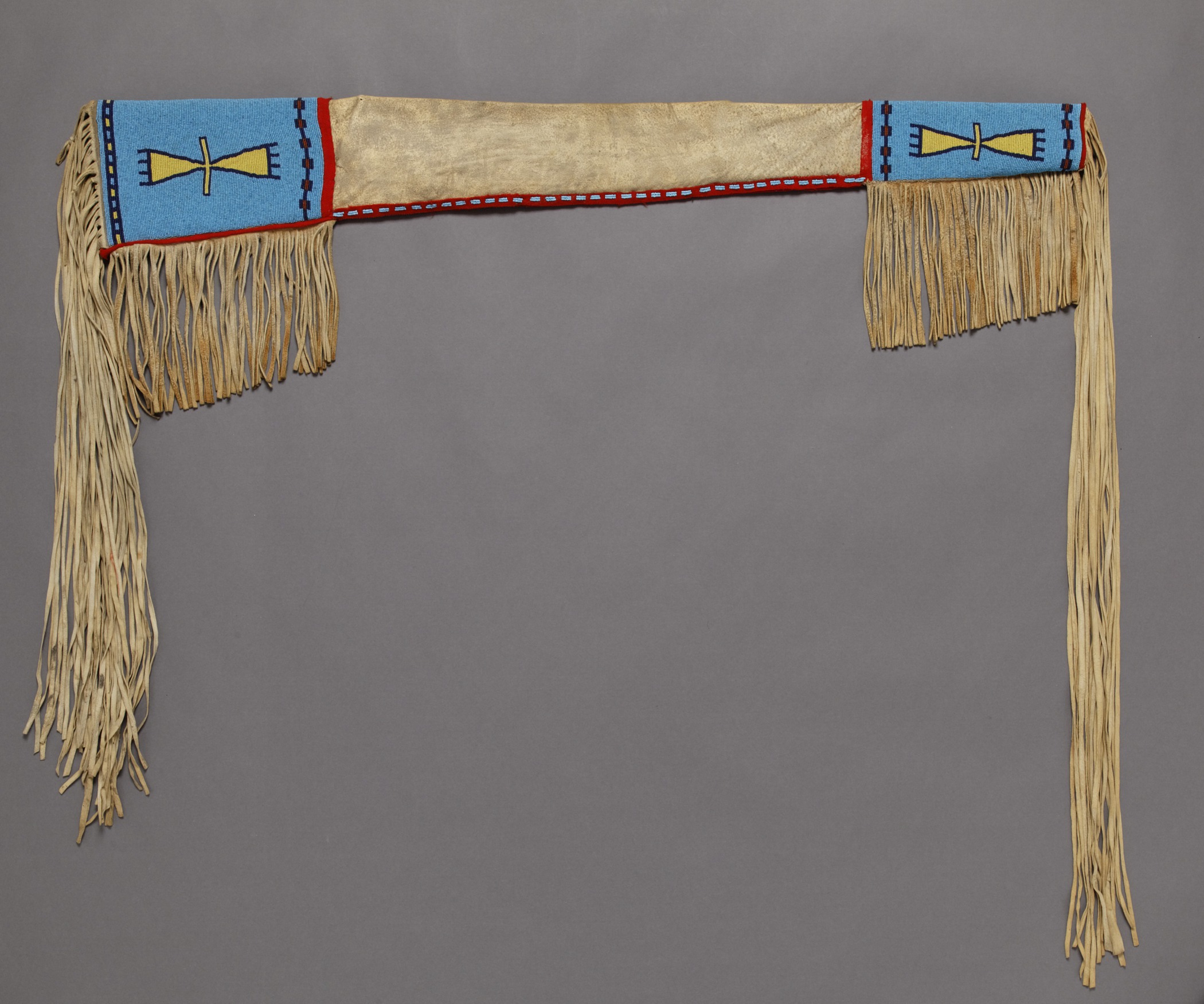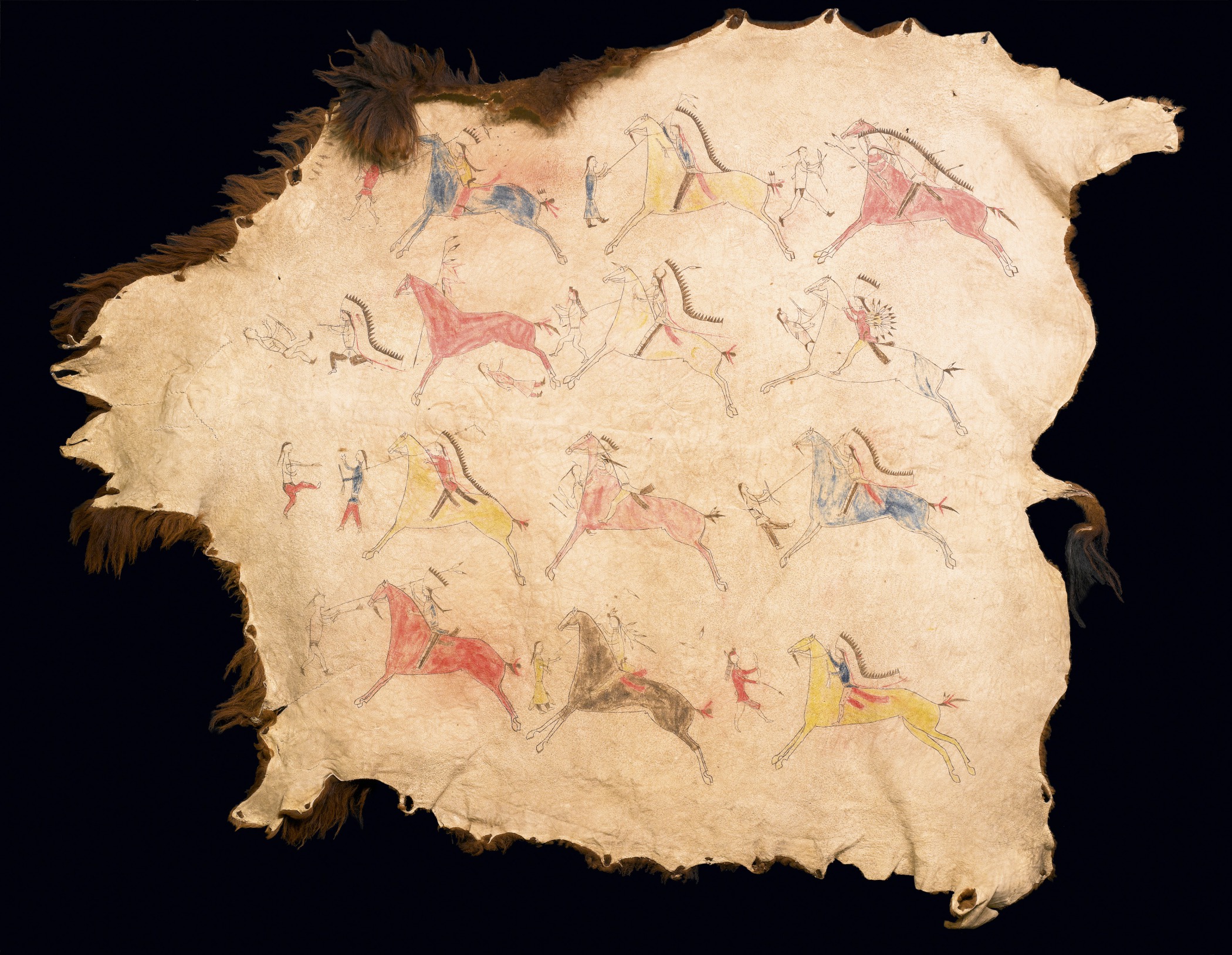Historically, male and female roles were well defined in Plains culture. Mutual roles were crucial to the functioning and survival of Plains societies. Women made almost everything. They prepared food and hides, and sewed and embellished clothing and containers. They often travelled on foot as their families moved from place to place, and erected the tipis that sheltered families once they arrived. They hauled water and firewood. They cared for children. Some women were healers, an honored and important role.
Although they had many responsibilities, women also had power that many European women lacked before the twentieth century. They owned the family home and most of its contents. In agricultural societies, they planted and harvested crops, but they also owned the fields, seeds, and agricultural tools. Women had the right to divorce, and since they owned their homes, an unkind husband could find himself homeless, with only his horse and weapons to his name.
Men were responsible for hunting, securing meat, and capturing and caring for horses. These responsibilities were dangerous and often required travelling far distances. Men also made tools and weapons, and built shelters. They traded, negotiated, and fought when disputes arose.
Children were taught these roles and responsibilities from a young age. They learned by observing and helping their elders and through play. Children were treasured, and many beautiful objects were made to hold, clothe, instruct, and entertain them.
Today, Native American men and women occupy a range of roles in modern society, but many also take seriously their responsibility to pass traditional knowledge and identity down to their children.


